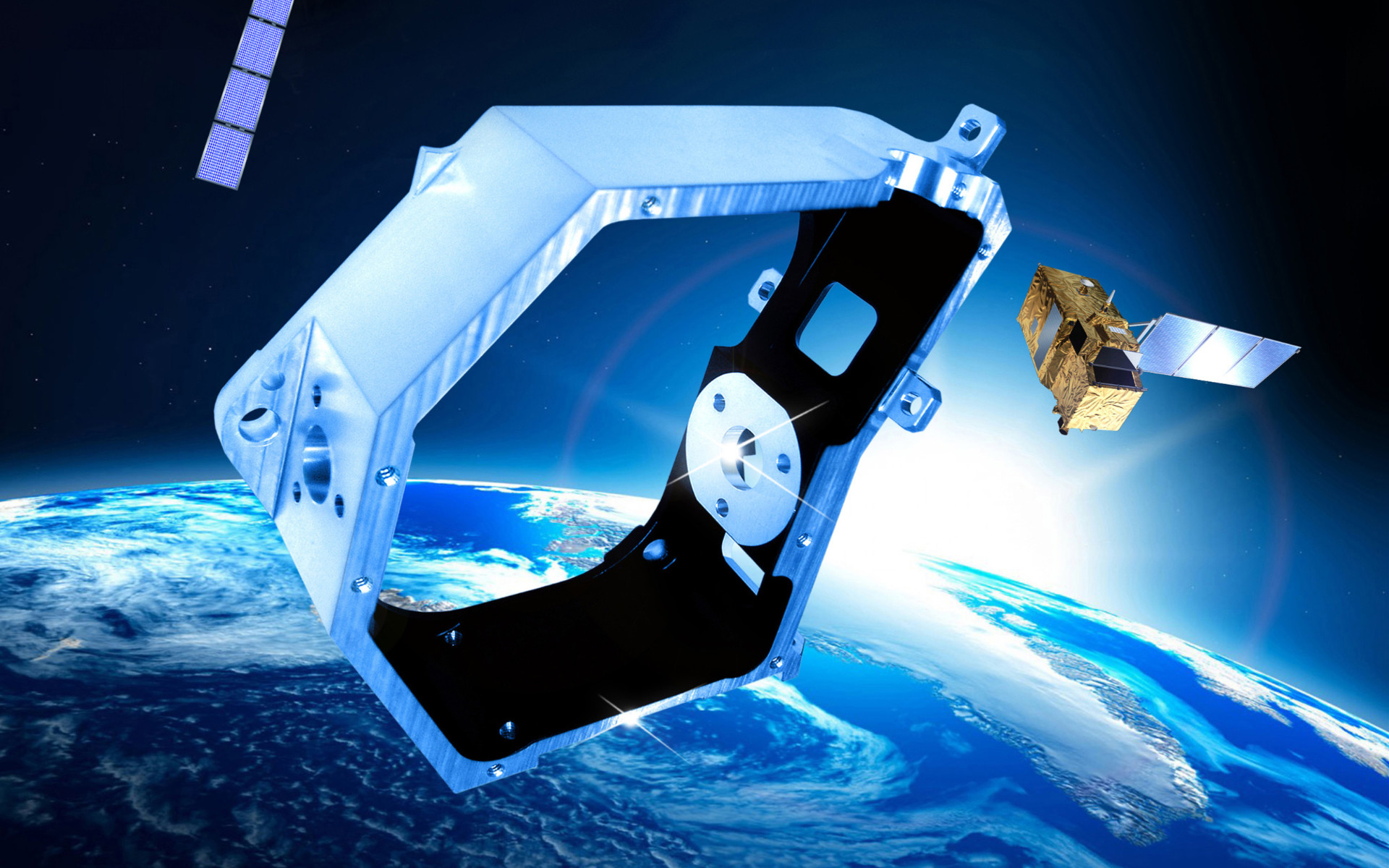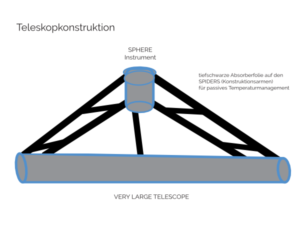Stray light and passive heat management under extreme operating conditions in outer space applications
In the digital age, aerospace will assume a key role in the realization of future technologies – such as for autonomous driving or the increasing interlinking and digitizing of the industry. Optical systems and instruments for applications in outer space – such as satellite optics or space telescopes – must meet extreme standards and pass an elaborate qualification process through ESA / NASA. This also applies to all parts, components and materials that are used.

Optical coatings, which play a significant role in achieving the performance of optical systems, are also subject to these demanding requirements. The very high standards for reliability, robustness and durability result from the extremely long application operating period of several decades, as well as the specific environmental conditions in space:
- Cosmic radiation.
- The low external pressure of the vacuum.
- Extreme temperature fluctuations and thermal cycles.
- Mechanical vibration and shock.
- Plus ultimately the impossibility of maintenance or repair.
Below is a small selection of 2 executed projects for space applications.
(To the overview of all projects for space applications)
Stray light management with FractalBlackTM in flight hardware of the CHEOPS Mission & UVN Instrument (Sentinel4)
ACKTAR’s Fractal Black™ direct coating was used for stray light suppression in the CHEOPS-Mission flight hardware. This ESA instrument observes exoplanets via transit method, in order to determine their properties with greater precision. A deflector plate protects the little telescope against stray light. In order to meet the high standards for stray light suppression, the Fractal Black™ coating was applied to several of the inner surfaces.
The size and presence of a sharp edge posed a challenge; however, outstanding results were verified by means of optical measurement.
Fast temperature changes and adhesion tests were also performed on edge tests in order to confirm the adhesion of the coating in thermal environments.
The deflector plate passed all of the qualification steps on the subsystem and instrument level.
See the complete paper.
FractalBlackTM and MagicBlackTM have also been used in the UVN instrument on Sentinel 4 (the ESA’s Copernicus program), which observes atmospheric pollutants from outer space.
The integrated calibration assembly provides the device’s calibration references in regular intervals.
The reference is obtained from sunlight, which is scattered by a stack of diffusers and illuminates the instrument.
The calibration is preceded by a deflector plate which suppresses the stray light from external sources and earth tremors close to the field of view.
At the same time, every influence of the deflector plate should be prevented for absolute transmission of the diffusers, and to block the sunlight that is inevitably dispersed within the deflector plate.
Stray light analyses identify Fractal Black™ as a qualified solution for this application purpose. See the complete paper

Passive thermal management with NanoBlackTM in the SPHERE-instrument of the VERY LARGE TELESCOPE
Acktar’s NanoBlackTM film product is utilized in the SPHERE-instrument of the Very Large Telescope in order to significantly reduce the Low Wind Effect that arises under critical operating conditions.
The LWE occurs due to air temperature inhomogeneities and leads to loss of image quality.
Thanks to passive thermal management with NanoBlackTM film that was applied to the telescope support frame, the response to temperature changes was optimized and the LWE occurrence probability was reduced from 20% to 3.4%.
The compensation of image losses led to increased operation productivity of the space telescope. See the complete paper.
The properties of NanoBlackTM
- Different properties for various wave length ranges.
- High absorption / low reflection in UV and VIS spectral range.
- Low infrared emission level.
- Practically no gas emission.
- Vacuum and thermo-vacuum cycle compatible.
- Application temperatures from -70°C to 250°C.
- No particle contamination.
- Only a few micrometers thick.
- Compatible with virtually all substrate materials.



